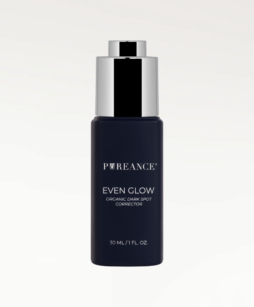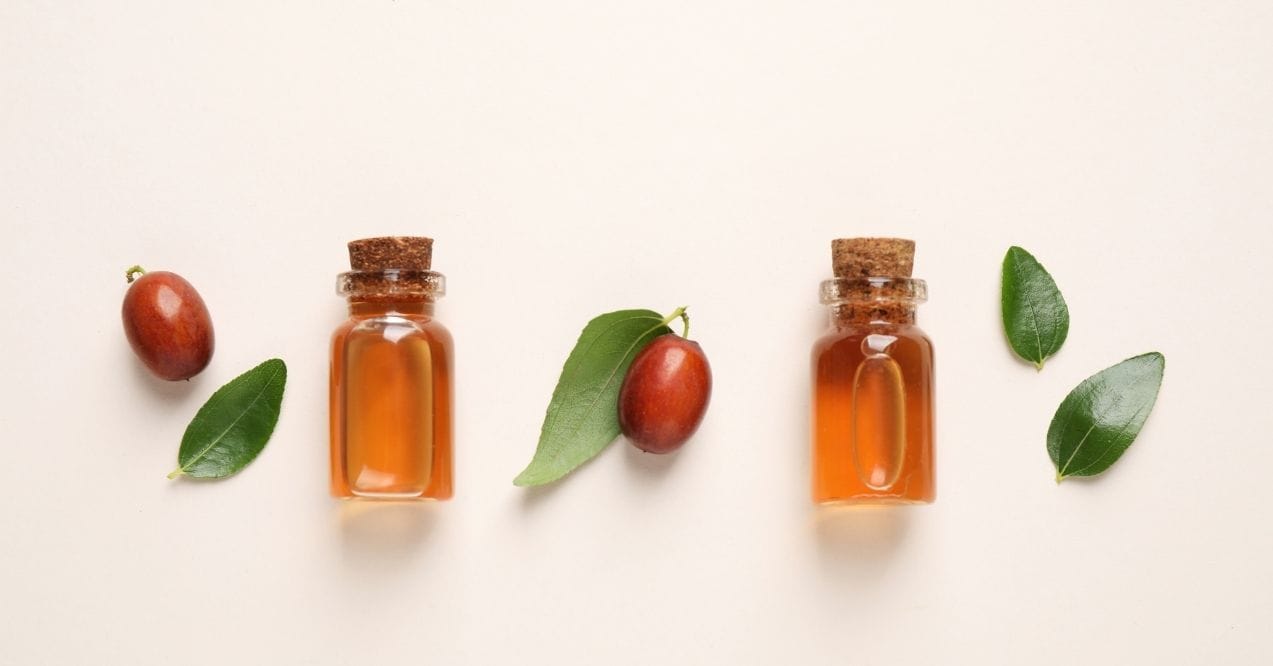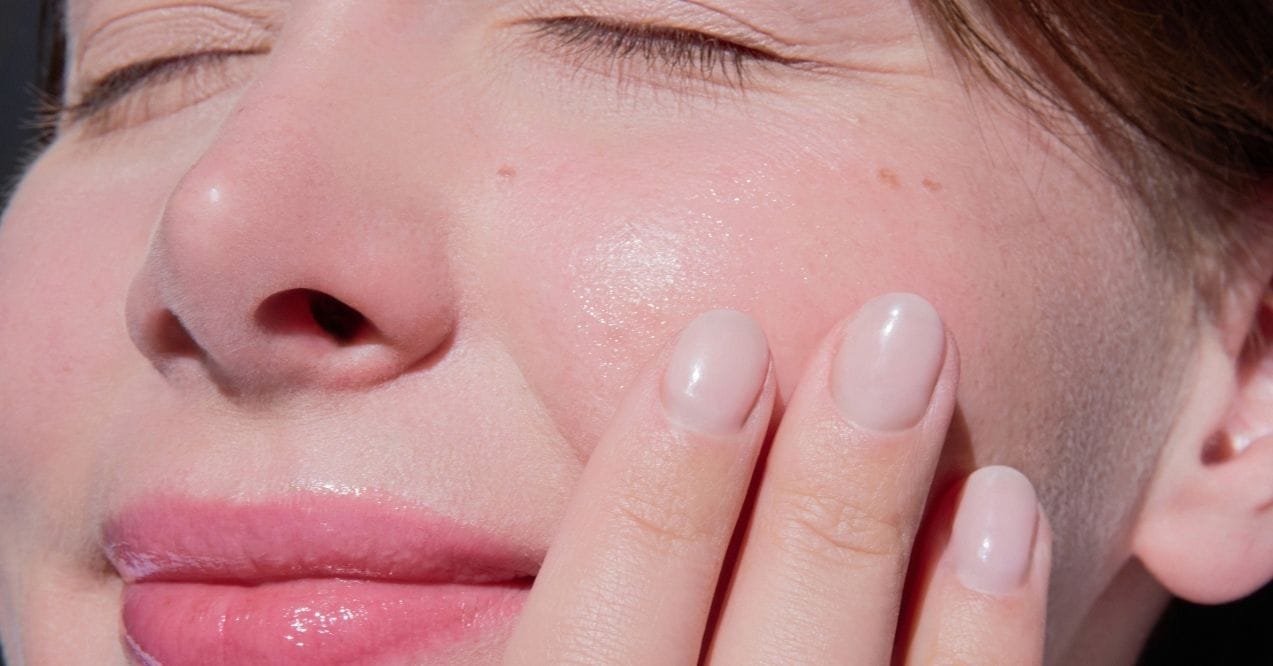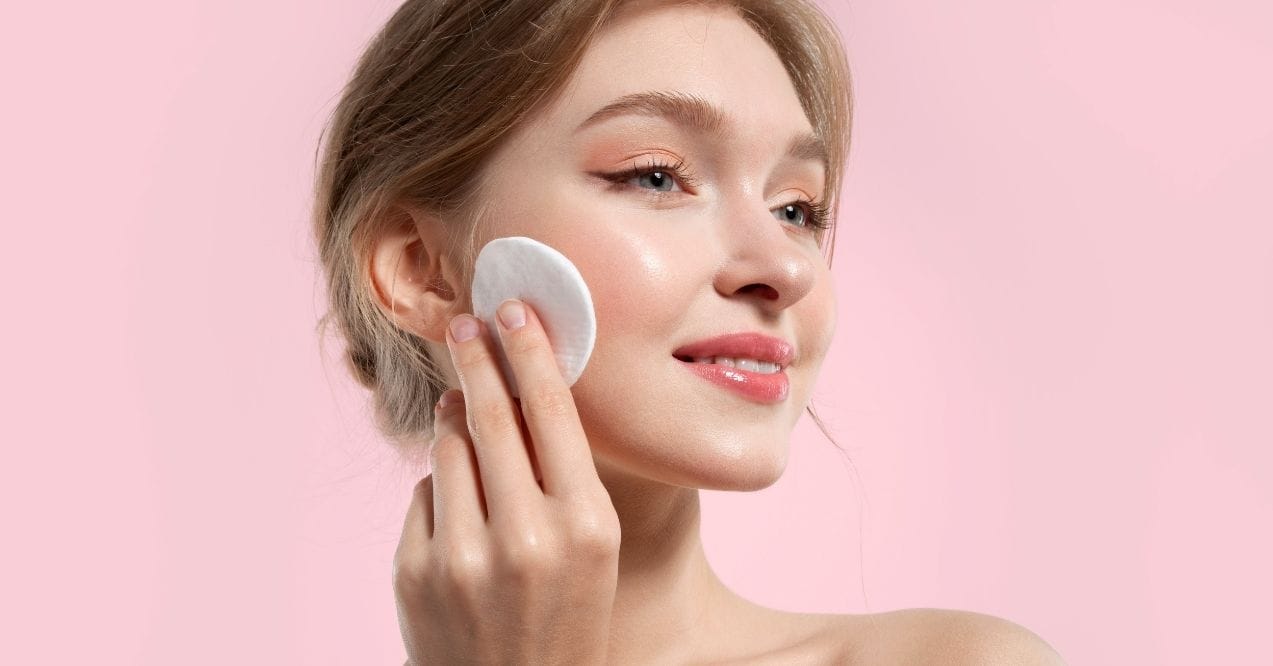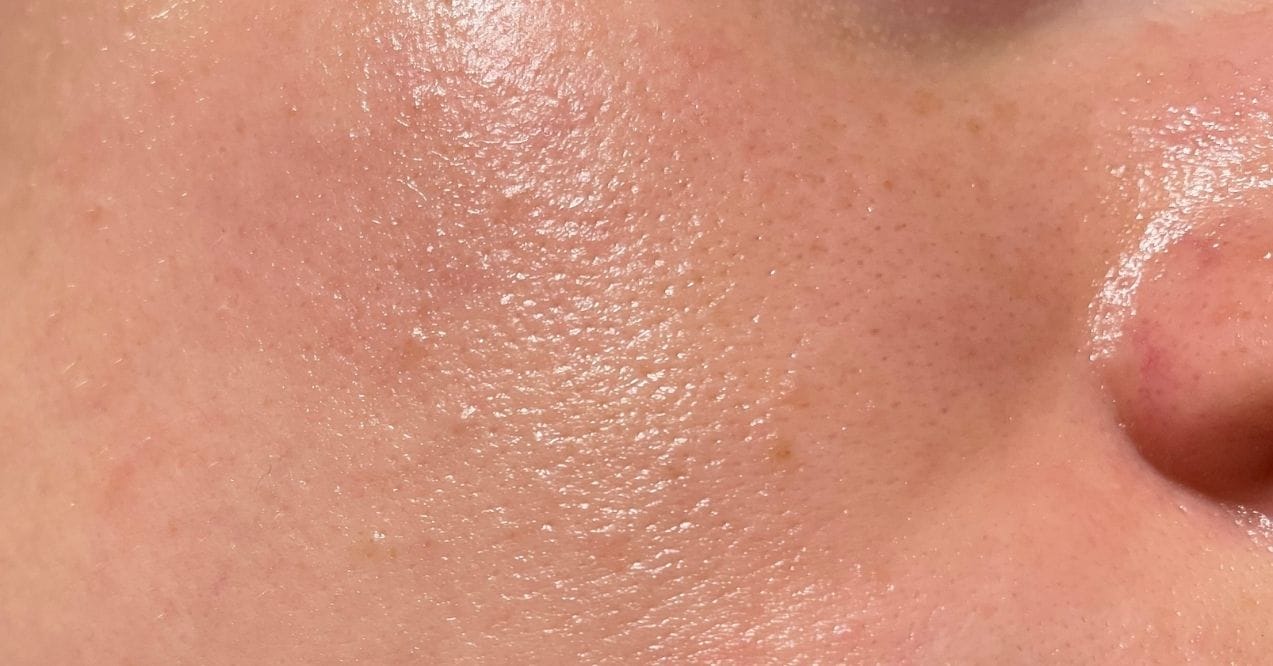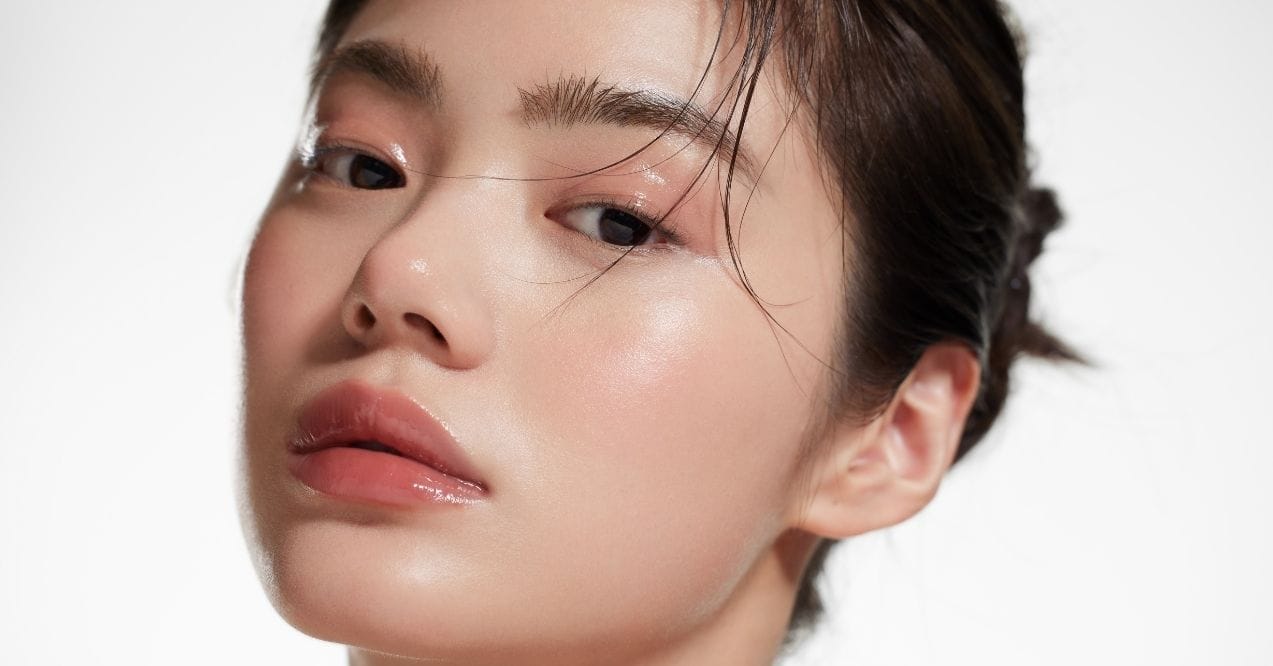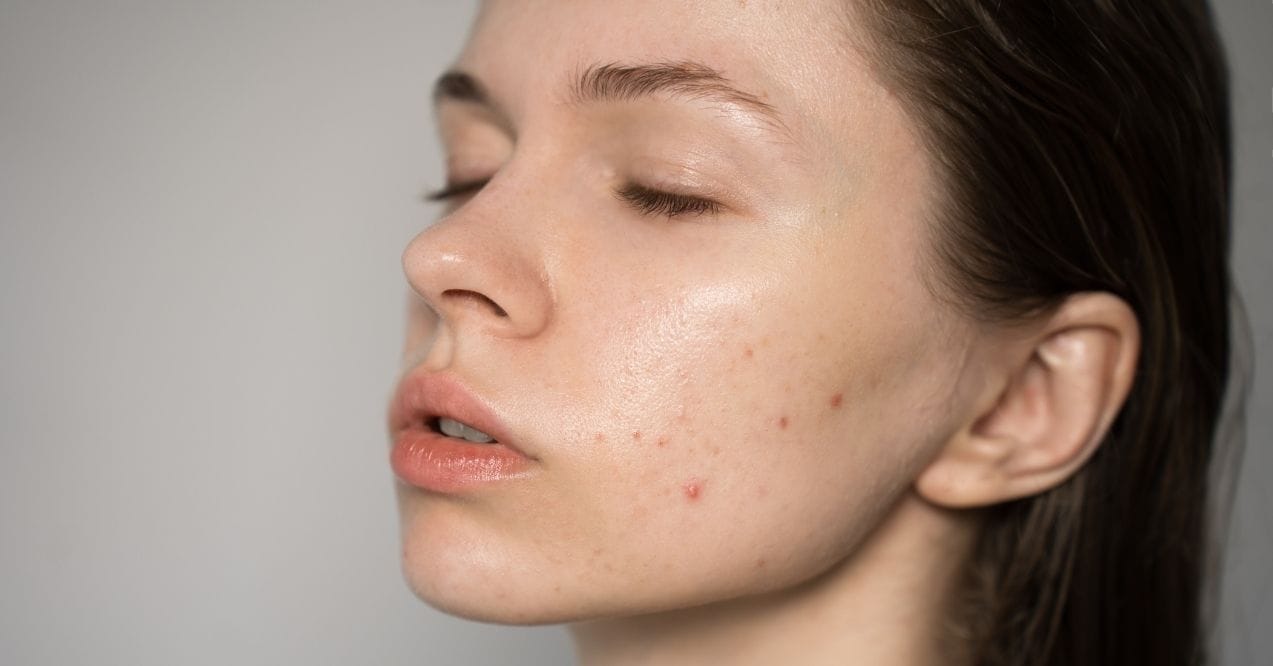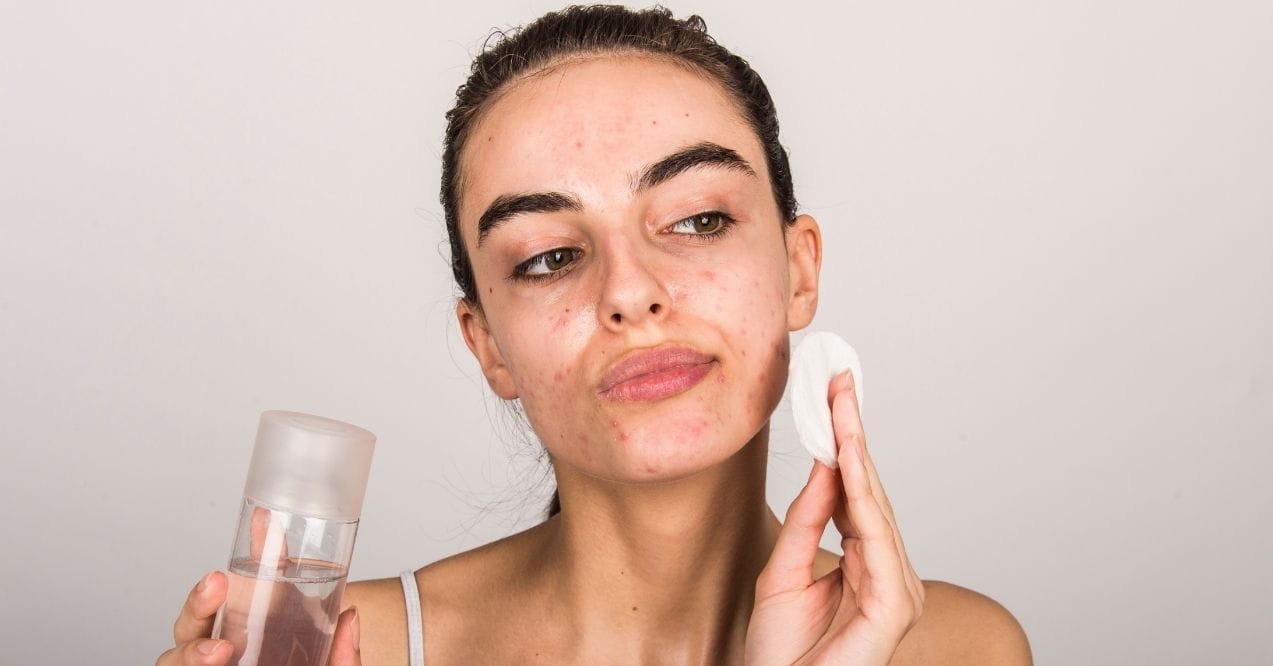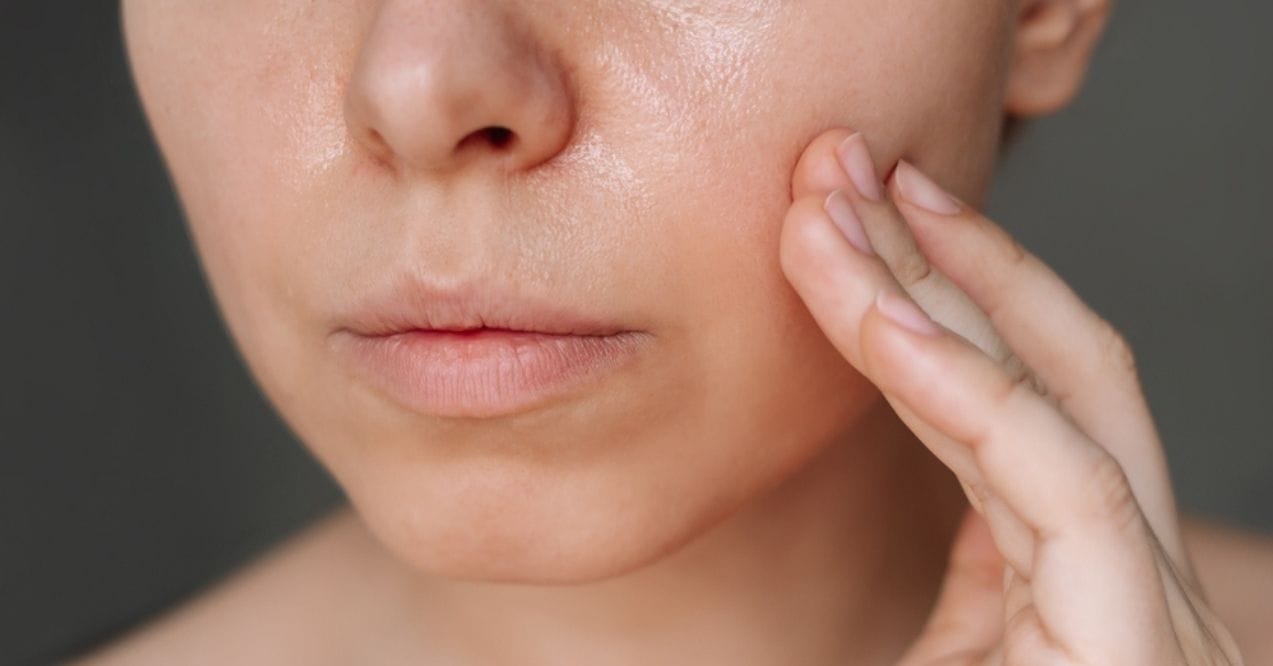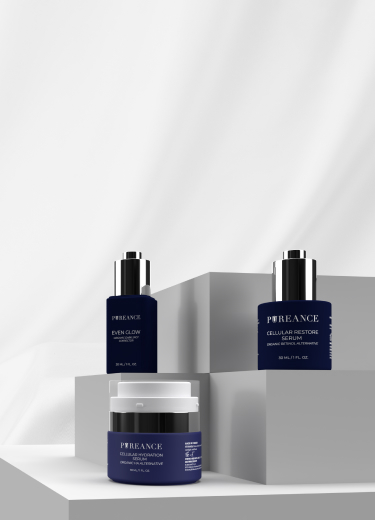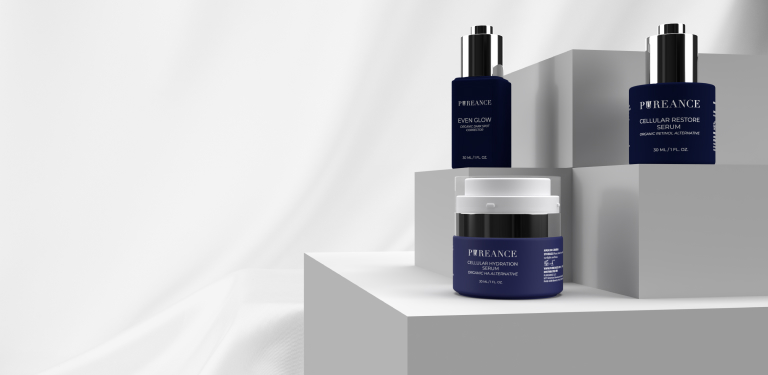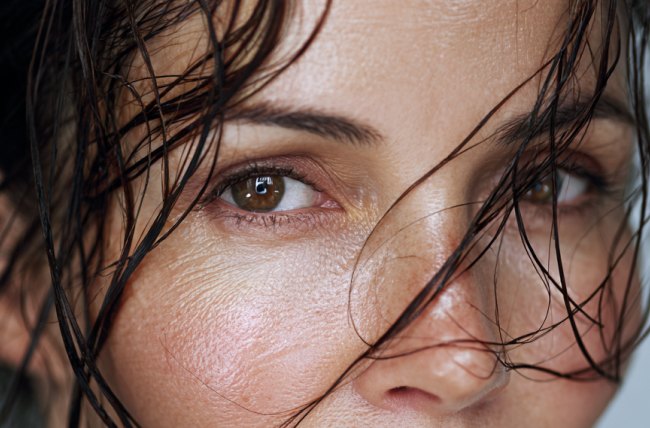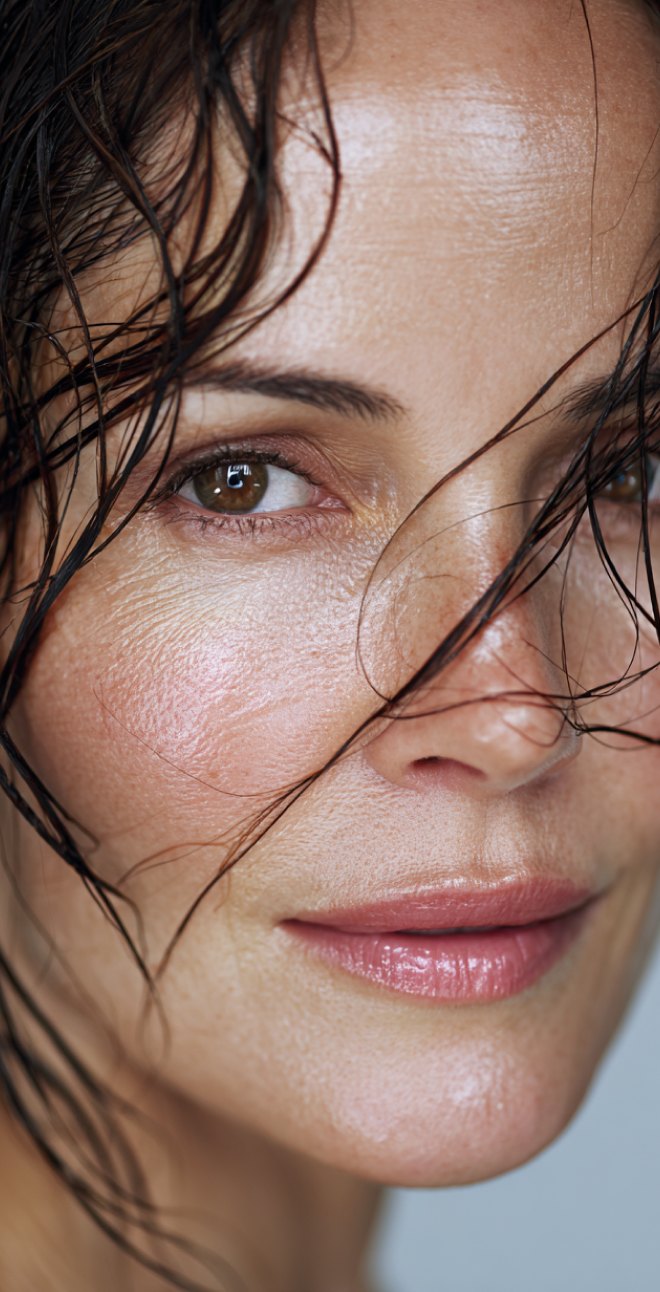


Why Is My Skin So Shiny but Not Oily?
Many women with mature skin are surprised to notice a persistent shiny appearance that isn’t caused by oil. This unexpected glow can feel confusing – especially when your skin doesn’t feel greasy but instead feels tight, dry, or even uncomfortable. So, why is my skin so shiny but not oily? The answer often lies in how light interacts with your skin’s surface and the health of your moisture barrier.
In this guide, we’ll explore the possible reasons behind this shiny-yet-dry look, how to tell if your skin is truly oily or just reflective, and what you can do to restore a smooth, balanced appearance.
Key Article Findings
- Dehydration, barrier disruption, and aging changes can create surface shine even when skin feels dry.
- Blotting paper and observing daily shine patterns reveal whether you’re dealing with oil or moisture imbalance.
- Apply products to damp skin, use cream cleansers, and choose matte sunscreens for optimal results.
What Causes Skin to Look Shiny But Not Oily?
Understanding why is my face shiny but not oily requires looking beyond surface oil production. Several factors can create an unexpected glossy appearance even when your skin feels dry or tight.
Dehydration & Barrier Disruption
When your skin’s protective moisture barrier becomes compromised, it creates a paradoxical shine-but-dry situation. This happens because:
- Over-exfoliating strips away natural oils faster than skin can replenish them
- Harsh cleansers disrupt the skin’s natural protective layer
- Compromised barriers reflect light differently, creating an unnatural sheen
- Skin feels tight and flaky despite appearing glossy
Silicone or Mineral-Based Products
Certain skincare and makeup products can leave a reflective film on your skin’s surface. When your skin is shiny and dry, check if you’re using:
- Silicone-heavy primers that sit on top of skin
- Mineral sunscreens that don’t fully absorb
- Heavy moisturizers with film-forming ingredients
Aging and Skin Texture Changes
As skin naturally changes in your 40s and beyond, texture becomes less uniform. Uneven surface areas reflect light inconsistently, creating patches of shine even when oil production decreases. The skin’s natural plumpness diminishes, affecting how light bounces off its surface.
Environmental and Seasonal Triggers
Indoor heating, air conditioning, and humidity changes disrupt your skin’s moisture balance. These environmental factors often leave people wondering why is my skin shiny when the underlying issue is dehydration, not excess oil production.
Is It Shiny + Dry or Shiny + Oily? How to Tell the Difference
Distinguishing between truly oily skin and shiny-but-dry skin is crucial for choosing the right skincare approach. Many people mistake dehydrated, shiny skin for oily skin and end up using products that worsen the problem. Learning to identify your skin’s actual condition helps you support its natural balance more effectively.
Signs of Shiny-But-Dry Skin
Shiny-but-dry skin displays conflicting characteristics that can be confusing. Look for these telltale signs:
- Tightness or pulling sensation, especially after cleansing
- Flaky or rough patches in areas that also appear shiny
- Dull, lackluster appearance with sporadic glossy zones
- Fine lines more visible when skin catches light
- Makeup sits unevenly or appears patchy throughout the day
Signs of Oily Skin That’s Shiny
Genuinely oily skin maintains consistent characteristics throughout the day. True oily skin typically shows:
- Enlarged, visible pores across the T-zone and cheeks
- Consistent shine all day that doesn’t fade easily
- Greasy residue when you touch your face
- Makeup slides off or becomes patchy due to excess oil
- Blackheads or clogged pores appear more frequently
A Quick Self-Test
Try this simple blotting test to assess your skin’s oil production. Press a clean tissue or blotting paper against different areas of your face after two hours without applying products.
Oily skin will leave obvious grease marks on the paper. Shiny-but-dry skin will show minimal to no oil transfer, despite appearing glossy to the eye.
How to Restore Balance When Skin Looks Shiny but Feels Dry
Addressing shiny-but-dry skin requires a targeted approach that focuses on hydration rather than oil control. The goal is to support your skin’s moisture barrier while maintaining a comfortable, natural-looking finish. These strategies help restore balance without creating additional surface buildup.
Choose Hydrators, Not Heavy Oils
When your face is shiny but feels dry, lightweight hydrating ingredients work more effectively than heavy creams. Focus on water-binding ingredients that penetrate rather than sit on the surface:
- Glycerin draws moisture from the environment into your skin
- Panthenol supports skin’s natural moisture retention
- Hyaluronic acid holds up to 1,000 times its weight in water
- Squalane provides lightweight moisture without greasiness
Avoid thick, occlusive ingredients like petrolatum or heavy plant oils that can create additional shine on already-reflective skin.
Gentle Cleansing & Proper Exfoliation
Dry and shiny skin benefits from gentle cleansing that doesn’t strip natural moisture. Skip foaming cleansers and alcohol-based products that can worsen barrier disruption. Instead, use:
- Cream or oil-based cleansers that dissolve makeup without harsh surfactants
- Lukewarm water instead of hot water during cleansing
- Gentle exfoliation once or twice weekly with lactic acid or a soft washcloth
Apply Moisturizer on Damp Skin
If you’re wondering why is my skin so dry even when I moisturize, timing matters. Applying products to slightly damp skin helps lock in water molecules and improves absorption. Pat skin with a towel until just barely damp, then immediately apply your hydrating products. This technique maximizes moisture retention without leaving surface residue.
Sunscreen Without the Shine
Choose matte-finish or gel-based mineral sunscreens that protect without creating additional surface gloss. Look for zinc oxide or titanium dioxide formulations specifically designed for combination or mature skin types that absorb cleanly without leaving a reflective film.
Skincare Routine Adjustments for Shiny but Dry Skin
| Routine Step | Morning | Evening | Avoid |
| Cleansing | Gentle cream cleanser or micellar water | Double cleanse: oil cleanser + gentle cream cleanser | Foaming cleansers, sulfates, alcohol |
| Exfoliation | Skip (evening only) | 1-2x weekly: lactic acid or enzyme exfoliant | Daily exfoliation, harsh scrubs, high-concentration acids |
| Hydrating Serum | Hyaluronic acid serum on damp skin | Hyaluronic acid + niacinamide serum | Alcohol-based serums, heavy oils |
| Moisturizer | Lightweight, fast-absorbing lotion | Slightly richer cream (still lightweight) | Thick creams, petrolatum, heavy botanical oils |
| Sun Protection | Matte or gel-based mineral SPF 30+ | Skip (morning only) | Greasy chemical sunscreens, SPF moisturizers with shine |
| Weekly Treatment | Skip | 1x weekly: gentle hydrating mask | Clay masks, peel-off masks |
Conclusion
Understanding why is my skin so shiny but not oily empowers you to choose the right skincare approach for your unique needs. By focusing on gentle hydration rather than oil control, you can support your skin’s natural moisture barrier and maintain a comfortable, balanced complexion.
The key lies in identifying your skin’s true condition and selecting lightweight, water-binding ingredients that penetrate rather than sit on the surface. With consistent care and the right routine adjustments, you can achieve healthier-looking skin that feels as good as it appears.
Not necessarily. While some natural glow indicates well-hydrated skin, excessive shine often signals moisture imbalance or barrier disruption. Healthy skin should feel comfortable without tightness, flakiness, or persistent glossy areas that contrast with underlying dryness.
Often, yes. Dehydrated skin can appear shiny because a compromised moisture barrier reflects light differently. When skin lacks adequate water content, it may develop surface shine while feeling tight, rough, or uncomfortable underneath the glossy appearance.
Oil production naturally decreases with age, hormonal changes, or environmental factors like seasonal shifts. Over-cleansing or using harsh products can also reduce natural oils.
Not all oils. While heavy oils can increase surface shine, lightweight options like squalane support moisture balance without adding unwanted gloss. Choose oils that absorb well rather than sitting on the surface, and apply sparingly to maintain comfort.
This site offers health, wellness, fitness and nutritional information and is designed for educational purposes only. You should not rely on this information as a substitute for, nor does it replace, professional medical advice, diagnosis, or treatment. If you have any concerns or questions about your health, you should always consult with a physician or other health-care professional. Do not disregard, avoid or delay obtaining medical or health related advice from your health-care professional because of something you may have read on this site. The use of any information provided on this site is solely at your own risk.
Nothing stated or posted on this site or available through any services are intended to be, and must not be taken to be, the practice of medical or counseling care. For purposes of this agreement, the practice of medicine and counseling includes, without limitation, psychiatry, psychology, psychotherapy, or providing health care treatment, instructions, diagnosis, prognosis or advice.
